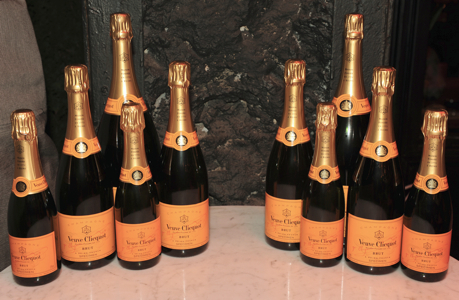By Marissa Gold, Glamour
You don't have to be a wine connoisseur to know that champagne is delicious. But it would be nice to know a few facts in order to buy the right type, store it smartly, and get the most out of each bottle (and you might be surprised to know how you really should be doing all of the above.)
Belinda Chang, Moët Hennessy's champagne brand education manager, shares a few surprising facts that might change the way enjoy bubbly beverages:
1. The Serving Glass Matters. "If you are drinking champagne (and in some cases, other high-quality sparkling wine) in a flute, you might be missing out!" Belinda warns. "The complex aromas, texture, flavors and finish of a long-cellared wine are best enjoyed in a proper wineglass. You are, in essence, drinking a fine chardonnay -- give the wine some space and increase your drinking pleasure."
2. Champagne Pairs Well With Everything. Wondering which wine will pair well with every course, appetizer through dessert? "Champagne and other sparkling wines work with the entire tasting menu," says Belinda. Her pick? "A richer pinot-noir-based style like Yellow Label from Veuve Clicquot can act just like a glass of pinot with your grilled salmon, roast chicken, smothered pork chops, or lacquered duck."
More from Glamour: 11 Dating Don'ts You Should Stop Doing Now
3. Champagnes Don't Need to Be Aged Like Wine. Saving that bottle of nice champagne you received as a gift for a "special" occasion? No need: "Most sparkling wines are designed to be consumed on release -- from the wine store to your fridge and then into your glass. Though champagnes can certainly change, evolve, and improve with time, the champagne houses have already done the work for you: By law, a non-vintage (blend of grapes and wines from several different harvest years) has to be aged for a minimum of 15 months (for a vintage champagne, three years).
4. If You Must Store Champagne, Do It Like This. "Keep the bottles horizontally to keep the corks moist -- dry corks lead to shrinkage and other bad things. Store in a cool (55 degrees is ideal, and cooler is fine), dark (wine and champagnes are subject to "light poisoning"), humid place. Your refrigerator is not ideal for long-term storage as some of the older models can vibrate which can affect what is inside the bottle." Where does Belinda store hers? The closet!
5. What to Do If You Can't Finish a Bottle. "If you are a single girl like myself, stock half bottles -- so many champagne and sparkling wine producers make them! I like to keep a six-pack of 375-milliliter champagne in my fridge. If you're opening a full-size bottle, invest in a metal stopper (many cost just a few dollars). Popping one of these will save the contents for a few days. Worst-case scenario: Use the remaining champagne for a delicious white wine sauce."
More from Glamour:
